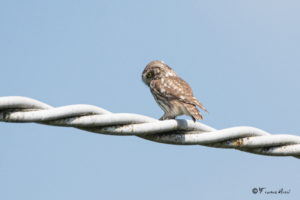Little Owl Athene noctua survey in Milan, northern Italy: distribution, habitat preferences and considerations about sampling protocol
Calvi G and Muzio M
Abstract:
We studied the Little Owl Athene noctua distribution in the city of Milan with a single-visit survey carried out during the 2013 breeding season. We searched for Little Owls in 82 sampling stations spread out all over the city using play-back technique. We detected 52 Little Owls in 33 sampling stations. The species appeared to be quite common in the municipality of Milan but with a greater abundance in the southern outskirts (Parco Agricolo Sud Milano). We modelled species occurrence by means of Generalized Additive Models selecting our best models with an information-theoretic approach. Little Owls’ presence resulted more likely in presence of permanent crops and farmsteads. The latter represent one of the main sources of nesting sites for the species. Little Owl’s detection is also more likely in relation with buildings’ mean height, of about 10 meters while it appears to avoid completely the more dense urban areas present in the central and in the north-eastern side of Milan. The Little owl is finally more likely to be found in the larger urban parks. The species’ distribution in the study area showed a significant spatial autocorrelation. Our best model accurately predicts 80.2% of observed data. According to model predictions 29.5% of the municipal territory has a medium or medium-high habitat suitability for the Little Owl. Field methods used in this work seemed to be easily carried out even by non-professionals. We discussed the global survey protocol for the species in light of our experience and with the desirable outlook of a large scale monitoring programme in our country: this is urgently needed to fill in the gap of knowledge on large scale distribution and population trends of the Little owl.
